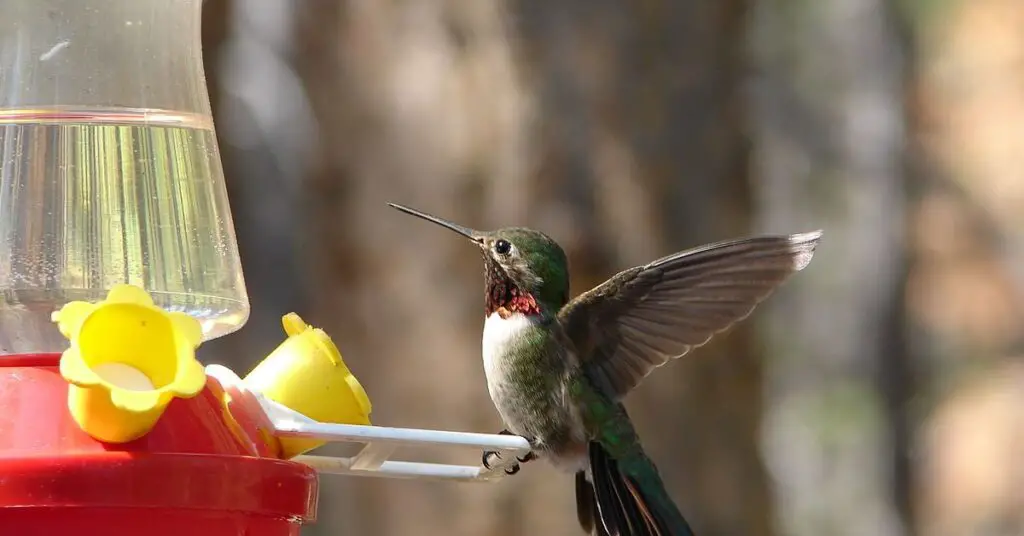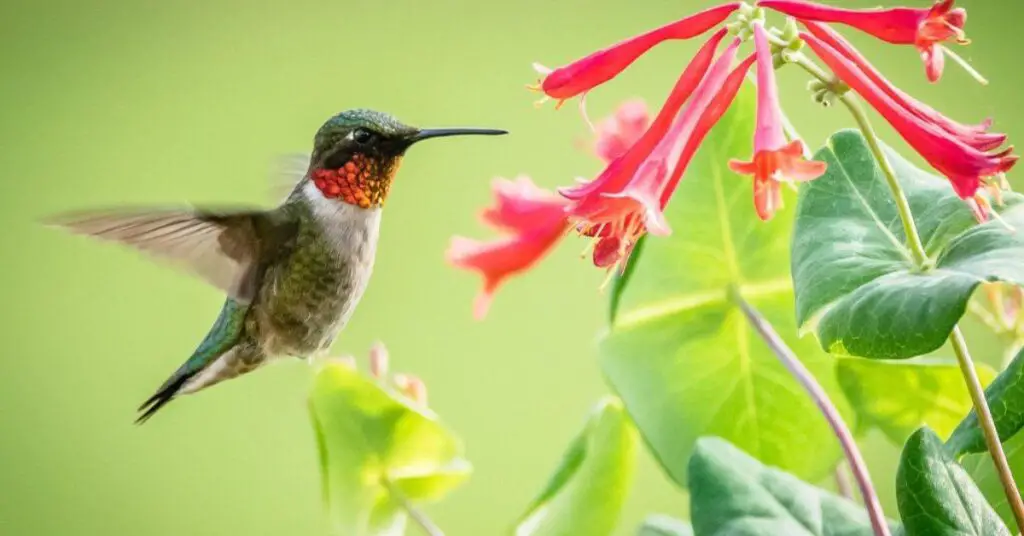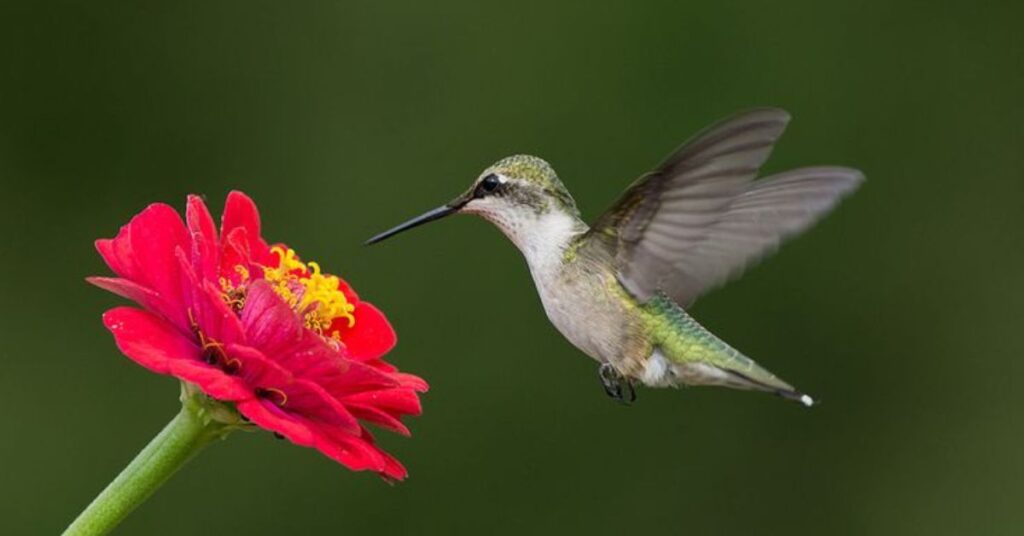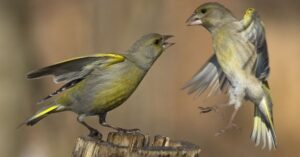As spring blossoms into full swing, gardens transform into bright ecosystems that beckon a symphony of life. Among the most enchanting visitors are hummingbirds, nature’s miniature marvels known for their dazzling iridescence and acrobatic flight.
While nectar-rich blooms play a crucial role in attracting these feathered gems, there’s another essential element that can draw them closer to your outdoor sanctuary, a hummingbird water bath.
In this article, we’ll explore how to attract hummingbirds using the best bird bath options and ensuring they have access to clean, refreshing water. Discover the features that make an effective setup and learn practical tips on placement, maintenance, and elevating your backyard experience.
Hummingbirds And Water
Providing water for hummingbirds is just as crucial as offering them nectar-rich food. These remarkable creatures require hydration to sustain their high-energy lifestyles, especially during the hot months.

A well-placed hummingbird bath not only attracts these avian wonders but also supports their daily maintenance routine, including preening and grooming. The shallow dishes filled with clean water can be just the oasis they need.
When introducing a hummingbird bath to your garden, consider adding pebbles or rocks in the water to give these tiny birds safe perches while they drink or bathe. They are naturally drawn to motion, so incorporating a small fountain can create ripples that catch their attention.
Regularly changing the water is vital; this keeps it fresh and healthy while also minimizing algae growth.
Explore more info about: How To Attract Owls To Your Yard
Providing Water For Hummingbirds
Creating an inviting oasis for hummingbirds is as simple as incorporating a hummingbird bird bath or a hummingbird water fountain into your garden. These features provide essential hydration.
A well-designed hummingbird bird bath can be adorned with shallow basins and ornamental edges, enhancing its aesthetic appeal while serving the practical need for water. The right depth allows thriving populations of these delicate birds to drink and bathe safely, turning your yard into their favorite retreat.
A hummingbird water fountain adds an enchanting element to your outdoor space. The gentle sound of trickling water attracts curious birds while creating a serene environment for both wildlife and human visitors.
Ensure that the fountain has fine mist sprays or shallow pools where these agile flyers can play without risk of drowning. By combining beauty and functionality with either option, you’ll cultivate an irresistible habitat that supports the local ecosystem while providing endless enjoyment for yourself and some truly magical guests.
There are few options avian creatures can use to supply hummingbirds with appropriate fresh water, including…
Misters
Creating a hummingbird-friendly environment extends beyond feeders filled with sugar water; incorporating misters can significantly enhance the appeal of your garden. Hummingbirds are not only drawn to nectar but also to cool, misty environments where they can bathe and hydrate.
When fine droplets cascade from a mister, it mimics their natural habitats, attracting these delightful birds while providing them an opportunity to refresh themselves in warm weather.

Misters can be strategically placed among flowering plants or near feeder stations. This creates a multi-sensory experience that lures hummingbirds closer. The gentle sound of water mixed with the vibrant colors of blossoms provides an oasis for these aerial acrobats.
Integrating native plants around the vicinity of your misters offers nutritional value through natural nectar sources, ensuring hummers have everything they need at their fingertips (or wings!).
Drippers
Hummingbirds, renowned for their vibrant colors and acrobatic flight, require not just nectar but also a reliable source of water to thrive. While sugar-water feeders are commonly used to attract these delightful avians, incorporating drippers is a game-changer.
Hummingbird drippers take off natural water sources like dew or droplets from leaves, allowing the birds to hydrate in an environment closer to their wild habitat. When strategically placed among flowering plants or nectar feeders, these small devices can become focal points that draw curious hummingbirds in for a drink.
By using drip methods alongside colorful blooms rich in nectar, you not only provide sustenance but also create an inviting oasis that promotes friendly interactions between species. Observing hummingbirds sipping from these unexpected water sources adds layers of interest and engagement to backyard wildlife watching.
Fountains
Creating a water fountain for hummingbirds not only attracts these delightful creatures but also enhances your garden’s aesthetic. Traditional birdbathscan sometimes deter hummingbirds due to their size and depth, But specialized fountains designed for them provide shallow pools or gentle mists that entice these tiny aviators to sip and splash.
Opting for a solar-powered fountain offers the added benefit of sustainability while ensuring a continuous supply of moving water, which is inherently more appealing to hummingbirds looking for hydration.
The choice of materials and positioning matters greatly too; consider incorporating natural stones or vibrant mosaics into the design to blend seamlessly with the surrounding landscape. Place the fountain in an open area where it catches sunlight without overwhelming shade—this invites both light and warmth, encouraging hummingbird visits throughout the day.
Incorporating native plants nearby can create a lush sanctuary that complements your fountain while attracting insects as an extra food source.
Sprinklers
While hummingbirds are famously drawn to nectar-rich flowers and feeders, providing water through sprinklers can create an enchanting environment that attracts these vibrant creatures in a different way.
A subtle mist from garden sprinklers or fine sprays can encourage hummingbirds to show off their acrobatic skills as they dart through the air, playfully interacting with droplets. This not only adds a refreshing dimension to your garden but also mimics natural habitats where humidity is prevalent, making it ideal for their comfort.
To optimize this attraction, consider timing your sprinkler system for early mornings or late afternoons when the sun casts gentle light across your yard. The shimmering droplets become almost magical under golden hour sunlight, turning your garden into a miniature paradise.
Keeping Water Sources Safe
Water is a precious resource that sustains life, yet it remains vulnerable to contamination and depletion. One innovative approach to keeping water sources safe lies in the integration of technology with community-driven initiatives.

Utilizing sensors to monitor water quality in real-time can empower local populations by giving them immediate data on pollutant levels and potential hazards. This transparency not only fosters a sense of responsibility among residents but also encourages proactive measures toward conservation and testing.
Engaging diverse stakeholders—like schools, businesses, and environmental organizations—can culminate in holistic strategies for safeguarding water sources. Educational campaigns that highlight the significance of protecting watersheds can galvanize communities into action.
Collaborating on clean-up efforts or advocating for sustainable agricultural practices helps ensure healthier ecosystems. When people perceive themselves as stewards of their environment rather than passive users, they are more likely to implement meaningful changes that protect these vital resources for future generations.
Water For Other Wildlife
Water is not just a vital resource for humans; it’s an essential lifeline for a multitude of wildlife species that rely on aquatic environments for survival and reproduction. From the delicate balance of ecosystems formed around freshwater ponds to the complex interdependencies found in wetlands, water sources serve as habitats for countless creatures, including amphibians, birds, and insects.
When looking at a seemingly ordinary puddle or stream, you might be surprised to discover thriving microcosms that hold diverse plant and animal life uniquely adapted to these fleeting oases.
The availability of clean water is increasingly under threat due to urbanization, pollution, and climate change. Many species are struggling to find adequate wetland habitats where they can thrive—not only for drinking but also for breeding grounds.

Innovative conservation efforts are crucial; creating artificial wetlands or restoring natural ones can significantly benefit local ecosystems by providing necessary hydration while promoting biodiversity.
Conclusion
Attracting hummingbirds to your garden can be a rewarding experience that enhances your outdoor space with vibrant life and color. By providing the right type of feeders, choosing appropriate nectar recipes, and incorporating native plants into your landscaping, you can create an inviting environment for these delightful creatures.
Maintaining clean feeders and ensuring a consistent supply of food will help keep them returning throughout the season. Remember to position your feeders in areas that offer shelter from wind and easy visibility for the birds.
FAQ’s
Do Hummingbirds Drink Water?
Yes, hummingbirds do drink water, although their primary source of hydration comes from the nectar they consume. Nectar is not only rich in sugars but also contains a significant amount of water, which helps meet their hydration needs.
Hummingbirds may occasionally sip from natural water sources such as rain puddles, dew on leaves, or even bird baths.
Do Hummingbirds Remember Feeder Locations?
Yes, hummingbirds are quite adept at remembering feeder locations. These birds possess excellent spatial memory, which allows them to recall specific landmarks and navigate effectively in their environment.
Studies have shown that hummingbirds can remember the locations of feeders for days or even weeks, especially if they have had positive experiences with those feeders, such as finding food there.
- Female Eastern Bluebirds - March 25, 2025
- Keep Ants Away From Hummingbird Feeders - March 25, 2025
- A Guide To Oriole Feeders - March 25, 2025








